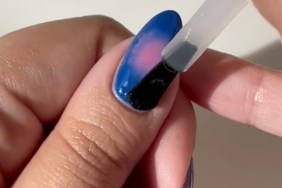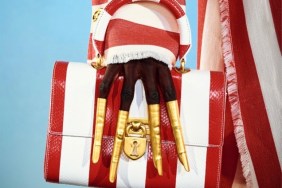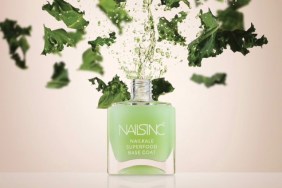5,000 BC – 3,000 BC
Rumor has it, Indian women used henna to dye their nails as far back as 5,000 BC, while over in Babylonia in 4,000 BC, they used solid gold tools to get the perfect mani.
Not to be outdone, in 3,000 BC, the Chinese decided to invent their own “stain”: a complex mixture of beeswax, gelatin, egg whites, gum Arabic, and flower petals that took forever to dry and also designated social status. Apparently, red and black colors ruled the land.
1300 BC – 1st Century BC
Queen Nefertiti and Cleopatra of ancient Egypt can be accredited with making red nails as popular as they are today. Back then, however, the rich and powerful were only allowed to don this color. The rest of the population was confined to pale shades.
600 BC
All that glitters was definitely gold (and silver) for the Chinese during this time period. Supposedly, the longer the nails, the higher up a woman was in social status.
1500s
Psh, and you thought nail art was a new trend!? The Incans were reportedly prettying up their nails with images of eagles long before we were ever blinging out ours.
Early 1900s
Much later in the early 1900s (approximately) porcelain nails were introduced, says celebrity manicurist and Director of Education for Dashing Diva, Pattie Yankee. “These nails had to be sized for a woman’s fingers, then hand made. They were extremely expensive and were glued on and taken off. They could be reused as well, as a full set could cost around $600!”
1920s
Drawing inspiration from car paint (yep, you read that right!), the first nail lacquer was born. “Basic colors were popular originally, such as reds,” notes Pattie. The moon manicure was also all the rage at this time.
1930s
In 1932, Revlon launched a groundbreaking new polish that used pigments instead of dyes to color the nails. By 1937, they were selling the opaque shades in drugstores and department stores, and by 1940 they had developed an entire manicure line.
1950s
As the years progressed, acrylics became the most in demand service to “enhance” your nails. The first acrylics originated from dental products (basically the same substances that dental crowns were made from), explains Pattie. “Several manicurists even got their products from dentists to use. This was soon deemed too dangerous to apply to nails, so safe/professional acrylic products were developed.” Of course, red nails with red lips continued to be in vogue.
1960s
Focus shifted away from red nails in the 60s as pretty pastel shades came onto the scene and dominated hands throughout this decade.
1970s
Eventually, colors evolved to the full spectrum, such as various reds, oranges, and eventually the French manicure style polish, says Pattie. “The shape changed from almond shaped to more square nails around the mid 70s through to the 90s, and French manicures became extremely fashionable.”
1980s
In the 80s creativity abounded and women went wild with nail art. “This included multiple polish color applications to one nail, airbrushing, hand painting, embellishments, feathers, foil art, bright shades of pink, neon hues, real gold nails, and nail charms,” details Pattie. “Just about anything was experimented with to create designs. Longer lengths were in and very square shapes. Various products were introduced to enhance the nails and their length, to include gels, tips, ‘organic’ nail powders and advanced types of acrylic blends.”
1990s
According to Pattie, after the run of nail art, consumers became more aware of their nail ‘health’ and products advanced in this direction. “Late 90s to early 2000, natural nails became popular again.” Black also had its heyday with the grunge crowd.
00s
Into the 2000s, nail polish colors evolved to every and all shades, notes Pattie, and within the last 18 months, nail art has arisen again with a vengeance. “Various gel products and gel polishes were introduced, 3-D nail art, glitter, and Japanese style art are now seen on all types and classes of women. The shape has also gone back to the original almond shape and even to a more dramatic stiletto shaped nail,” she says.
Now
Recently, the evolution of nail appliqués has become the biggest trend, says Pattie. “The first appliqués were introduced by the Minx brand in 2007, and now Dashing Diva is the innovator in the field, offering appliqués with embellishments to make producing the popular 3-D art styles a breeze for anyone.” Gel polishes are also trendy, although removal is difficult, she notes. “Our Colorfx appliqués duplicate the look of gel polish without the harsh removal.”
The Future of Manicures
So where are manicures headed in the future? Pattie thinks nail art will advance further to rebirth the gold nails and charms of the 80s. “Manicures will then go back to short and natural as the country becomes more environmentally and health conscious,” she predicts.
What do you think the future of nails holds?
images: IMAXtree, Dashing Diva







